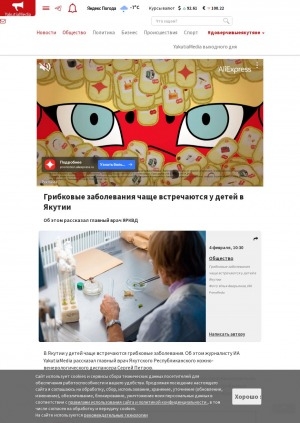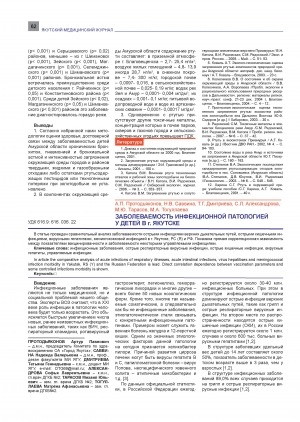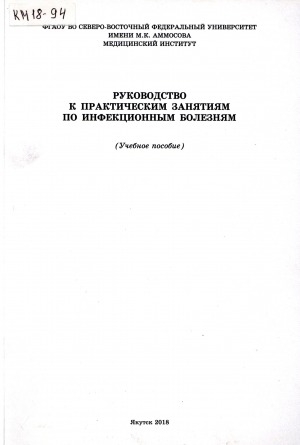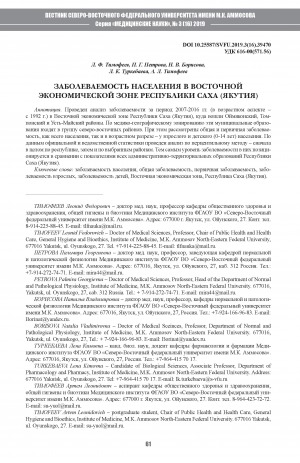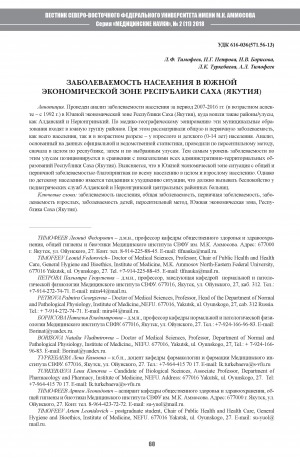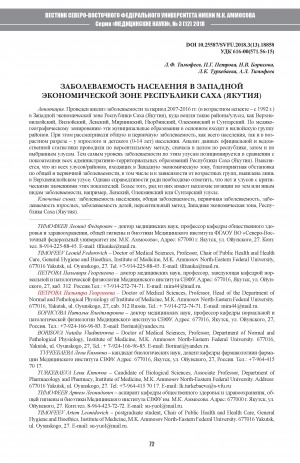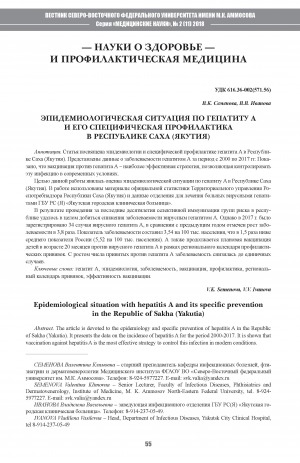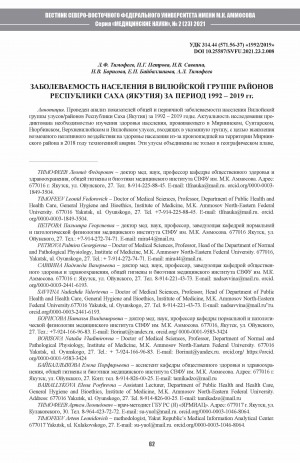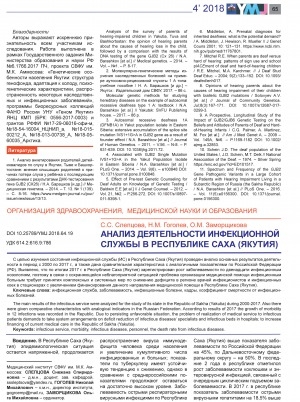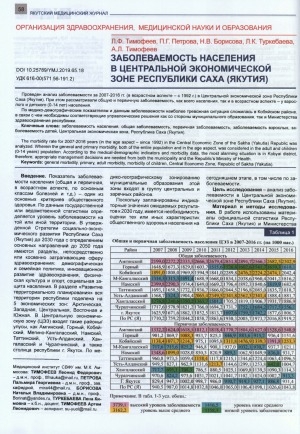Общественное здоровье населения, особенно детского, определяется показателями заболеваемости и смертности. В настоящее время инфекционные болезни составляют до 70 % в структуре всей заболеваемости детского возраста и около 80 % – в структуре младенческой смертности. Выявлено более 30 новых нозологических форм инфекционных заболеваний, в связи с чем введено понятие "новые инфекции". При этом уровень инфекционной заболеваемости не является стабильным и подвержен колебаниям, которые связаны как с влиянием природных факторов, появлением новых инфекций, так и с проведением профилактических мероприятий. Анализ данных динамики инфекционной заболеваемости у детей и подростков в Республике Саха (Я) показал аналогичную картину. Стало очевидным, что оптимистические представления о возможности ликвидации инфекционных заболеваний оказались не состоятельны. Эпидемиологическая ситуация по заболеваемости детей "управляемыми инфекциями" остается напряженной, что в значительной степени связано с дефектами проведения плановой вакцинации детей. На примере вакцинопрофилактики ГВ, дифтерии и краснухи мы имеем значительно высокие показатели. Но пример вспышки кори в 2019 – 2020 гг. показал важность массовости охвата прививками. Также остается высокой заболеваемость коклюшем с большими колебаниями в разные годы. Показатели инфекционными заболеваниями находятся в прямой зависимости от охвата детей профилактическими прививками. Среди инфекционных заболеваний, против которых не имеется средств массовой иммунизации, первое место принадлежит острым инфекциям верхних дыхательных путей, возбудителями которых являются свыше 200 вирусов. Важное место в инфекционной заболеваемости детей принадлежит острым кишечным инфекциям. Отсутствие полноценной этиологической расшифровки инфекционных заболеваний является серьезной проблемой. Изменение эпидемиологической ситуации в республике во время пандемии COVID-19 выявило ряд проблем и возможности их решения. Период пандемии показал, что достаточно простые и не затратные противоэпидемические мероприятия дают хороший эффект.
The public health of the population, especially children, is determined to a large extent by morbidity and mortality rates. Currently, infectious diseases account for up to 70 % in the structure of all childhood morbidity and about 80 % in the structure of infant mortality. More than 30 new nosological forms of infectious diseases have been identified, in connection with which the concept of “new infections” has been introduced. At the same time, the level of infectious morbidity is not stable and is subject to fluctuations, which are associated both with the influence of natural factors, the emergence of new infections, and with the implementation of preventive measures. An analysis of the data on the dynamics of infectious morbidity in children and adolescents in Yakutia showed a similar picture. It became obvious that optimistic ideas about the possibility of eliminating infectious diseases turned out to be untenable. The epidemiological situation regarding the incidence of “preventable infections” in children remains tense, which is largely due to defects in the routine vaccination of children. Using the example of HBV, diphtheria and rubella vaccination, we have significant success. However, an example of a measles outbreak in 2019-2020 showed the importance of mass vaccination coverage. The incidence of pertussis also becomes high with large fluctuations in different years. Indicators of infectious diseases are directly dependent on the coverage of children with preventive vaccinations. Among infectious diseases against which there are no means of mass immunization, in the present, as in previous years, the first place belongs to acute infections of the upper respiratory tract, the causative agents of which are more than 200 viruses. An important place in the infectious morbidity of children belongs to acute intestinal infections. The lack of a complete etiological decoding of infectious diseases is a serious problem. The change in the epidemiological situation in the country during the COVID-19 pandemic has revealed a number of problems and opportunities for their solution. The pandemic period has shown that fairly simple and inexpensive anti-epidemic measures have a good effect.


